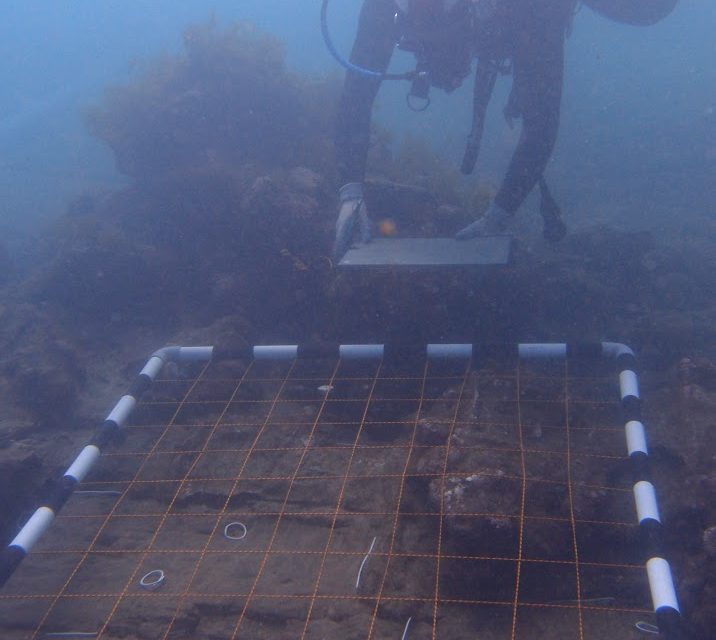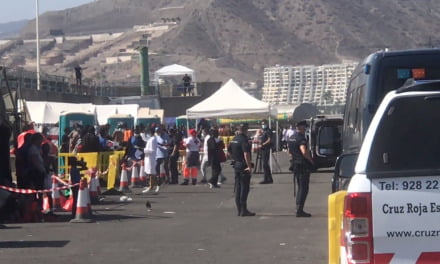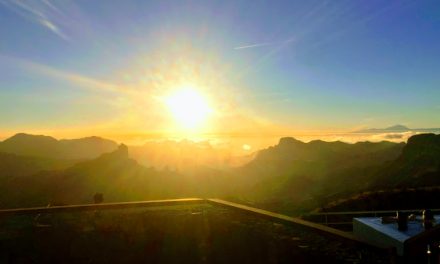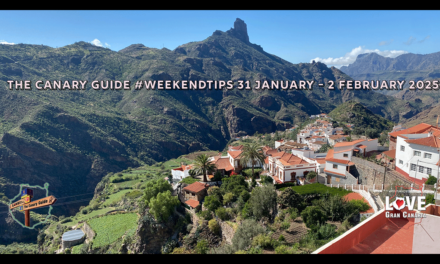The Cabildo de Gran Canaria last week presented the results of their latest underwater archaeological intervention, carried out during January and February in the waters of El Burrero, on the east coast of the island in the municipality of Ingenio, where an historic eighteenth century British ship has lain for almost 300 years just eighty meters from the shore.
The Minister for Culture, Carlos Ruiz, accompanied by the mayor of Ingenio, Juan Diaz, and his councilor for Beaches, Chani Ramos, visited the Club Nautico de El Burrero to see some of the recovered artifacts from this sunken wreck, first discovered in 1962 by the diver Tomás Cruz.
This is the fifth campaign to recover items from this wreck, and consisted of a team of three people led by a Sevillian archaeologist specialising in underwater archaeology, Josué Mata Mora, who toghether invested a total of 120 hours underwater in order to delimit the remains and analyse the state of conservation of the timber that had been previously documented in the 2008 campaign.
The Ministry of Culture, Historical Heritage and Museums of the Cabildo de Gran Canaria, invested 18,000 euros in the project, seeking to determine with precision the possible date of the shipwreck, using traditional techniques (underwater planimetry) and photogrammetric survey (Photoscan) as well as to understand the function of the vessel, and under which nation’s flag she originally sailed.
The prospecting was carried out at a depth of 3-4 meters, in a sandy and stoney section of the coastal area of El Burrero. According to experts, the proximity of the remains to the coast and the shallow depth at which they were found have had a significant influence on the site. Erosion, pillage and anthropization have been a relentless constant in the history of this shipwreck.
From the first signs, the team of underwater archaeologists were able to determine that we are dealing with a ship of a certain size, with a skeleton construction, probably dating to the mid-eighteenth century. For the time being, the construction system (the use of wooden enclosures, the presence of a double wooden lining, and presence of notable clearings between frames) points to the vessel being possibly of English origins, probably military, taking into account that in the 60s there was an extraction of 15 guns made from cast iron, which were removed without the necessary precautions.
It is believed that she did not even have cargo as she came to get it and then sell it in ports where she anchored such as Funchal or London. These corvettes were light boats of about 30 meters long, but conserved from this there are only 7 linear meters, that we currently know about.
The team noted an abundant presence of flint stones which the team believes was to serve as a ballast for the ship (and not the flints used for firearms of the era, as had been suggested in other interventions). This allowed them to link the construction of the ship either to the English or European coasts, where this raw material is most abundant (and the purchase and sale of such ballasts were recorded in documents of the time).
“For years the people of El Burrero and the municipality have known that there is a wreck here and there has always been a great concern about the issue, so it has been a wise to investigate and to transfer the information to the record and keep the story” said the mayor of Ingenio, Juan Díaz. “We must continue working and record what is discovered to make it known to the public” added the mayor concluding by thanking the Town Council for the work that is being done.
Carlos Ruiz, Councilor for Culture of the Cabildo, commented that what is being attempted is “to know more about this wreck, to date it, to know its origin, the date of its sinking , and to accumulate more and more information using the more modern and current means to keep it ” He explained that he is waiting for the report to see what the experts advise, since only a week ago they finished and the results are still being analysed, “one of the proposals that we are considering is to locate an information panel as well as to study what future actions can be carried out for conservation, given the impossibility of removing the remains as they could be damaged. ”
Ceramics found at the site, have been reduced to just a very few fragments of type known as “salt” (Stoneware), which was started in the Rhineland area (Germany) in the sixteenth century and was later imitated by the workshops of Devon (England) in the seventeenth and eighteenth century.There have also been documented remains of ceramic pipes, widely used in the maritime contexts of the time, with manufacturing marks that could place their manufacture between Holland and England between the seventeenth and eighteenth centuries.
Remains of the on-board cutlery have been recovered, such as a pewter ladle with clear remnants of Baroque decoration, possibly used for the service of officers.
In 1741, according to one Captain General Andrés Bonito Pignatelli, two English corsairs from Funchal (Madeira) entered the Gando inlet attempting to capture a Spanish ship called El Canario, which was anchored in the bay undergoing repairs. After the attack was repelled, the corsairs fled to the south. The hypothesis maintained by investigators remains that the Corsair, having suffered great damage and with few survivors left on board, according to the story of the famous writer Viera y Clavijo, was possibly unable to maneuver after fleeing and, in perhaps a desperate state may have ran aground on the rocks and ended up sinking just off the beach at El Burrero.
Once the delimitation of the archaeological site was completed, the operation then turned to the work of covering the remains with sand to help preserve the ship in situ.
Anyone considering going on a little treasure hunt of their own should think twice as the wreck of El Burrero beach is legally included in the archaeological record of the municipality of Ingenio with the registration number 11,032 and that it was the first underwater site of this nature to be excavated in Gran Canaria with an administrative permit.
According to specialists, it has unique characteristics in the Canary Archipelago given that at the moment it is the only documented wreck of modern times with a wooden hull structure remaining. This fact gives it exceptional characteristics, both for the study of naval history and for the dissemination of various insights related to this activity, with trade, ancient transport and underwater cultural heritage in Gran Canaria.
16 pieces of artillery
More than half a century since the wreck’s discovery, and after four archaeological interventions in 1962, 1968, 1994 and 2008, the Cabildo has emphasised once again that the remains of this submerged ship in El Burrero, is one of the most interesting underwater archaeological sites in Gran Canaria, from the historical-scientific point of view as well as the patrimonial heritage of the island.
16 new underwater sites
Of the 132 new enclaves that the Cabildo de Gran Canaria has recently incorporated into the Archaeological Charter of the island, which had not been updated for 14 years, 16 are underwater, which constitutes just over 10 percent of the total and represents a delimited area of 819.20 hectares. The aim now is to protect these as some of the most fragile and complex patrimonial heritage assets including underwater remains such as these.
According to the Convention for the Protection of the Underwater Cultural Heritage, this heritage includes “all traces of human existence that have a cultural, historical or archaeological character, that have been underwater, partially or totally, periodically or continuously so for no less than 100 years. ”
For its part, the Law of Historical Heritage of the Canary Islands defines Canarian archaeological heritage as that composed of immovable and movable assets -for example, wrecks- of a historical nature that can be studied with archaeological methodology, whether or not they have been extracted and if they are on the surface such as in the subsoil or within the territorial sea.
Source: Cabildo de Gran Canaria

















